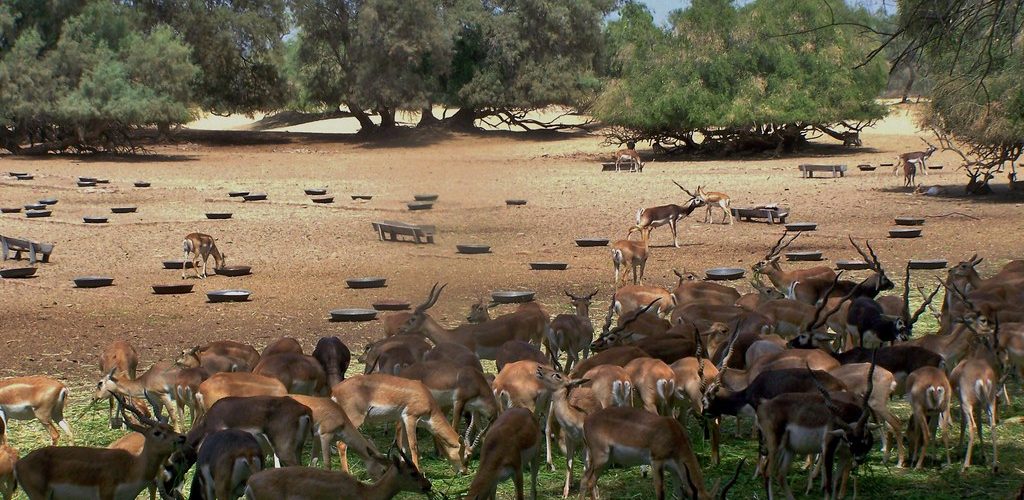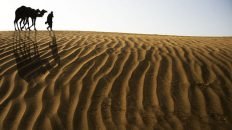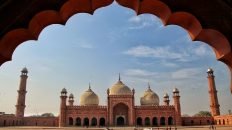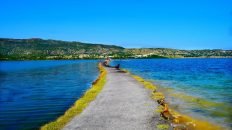Lal Suhanra Nartional park was declared a national park on 26 October 1972, following recommendations made by the Wildlife Enquiry Committee in 1971. Originally, the park comprised an area of 31,355ha, of which 20,932ha were desert, 8,488ha irrigated forest plantation and 1,934ha reservoir; it was due to be enlarged by 22,680ha. It is crossed by the dried-up bed of the Hakra River and features an important wetland, Patisar Lake. Pakistan Tourism Development Corporation (PTDC) has 6 A/C bedroom resorts in the park. Beside this camping can also be done in selected campsites.
Wildlife:
Blackbuck became virtually extinct in the Cholistan Desert but the species has been re-introduced in Lal Suhanra within large enclosures, together with Chinkara gazelle, Nilgai antelope, Hog deer and Indian rhinoceros. There is big lake in the center of the park called Patisar Lake, which is ideal for bird watching. Patisar Lake regularly holds between 10,000 and 30,000 ducks and common coot in mid-winter. Over 13,00 waterfowl were present in January 1987. The park also supports a large population of birds of prey.
Mammals:
Mammals in the park include Long-eared Hedgehog, Nilgai antelope, Black buck, Chinkara gazelle, Hog deer, Red fox, Bengal Fox, Golden Jackal, Porcupine, Caracal cat, Moongoose, Jungle cat, Indian Wolf, Wild boar, Honey Badger or Ratel, Little Civet, Indian (Black-naped) Hare, Smooth-coated Otter and Indian rhino.
Birds:
Birds in the park are Houbara bustard, Griffon vulture, Honey buzzard, Marsh harrier, Hen harrier, Laggar falcon, Peregrine falcon, Kestrel, Indian sparrow hawk, Egyptian vulture, Larks, Shrikes, Wheatears and Barn Owl.
Reptiles:
Reptiles in the park are Monitor lizard, Russell’s viper, Indian cobra, Saw scaled viper, Wolf snake, John’s sand boa and Spiny tailed lizard.






